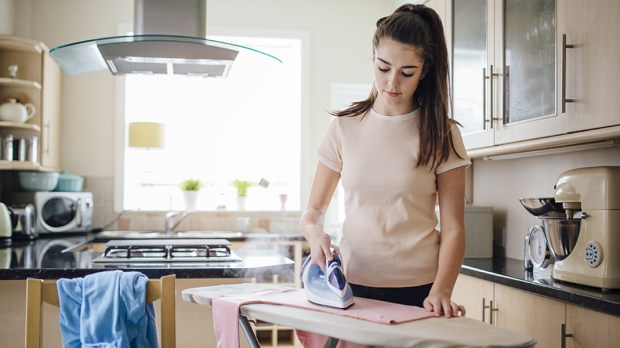Finland is a small country with only 5.5 million inhabitants, but it’s made an outsized global impact, thanks to the extraordinary success of its schools. Although the north European nation is roughly half the size of Texas, with less than one-fifth of its population, it has one of the best educational systems not only in Europe, but in the entire world.
There are many differences between the Finnish and American education systems. Finland has high salaries and great societal respect for teachers, plenty of recess time for students, total separation between school and team sports, and less emphasis on homework and tests. One of the most surprising differences is the number of hours devoted to the subject called “Housekeeping” or Home Economics (“Kotitalous” in Finnish). According to the Finnish Ministry of Education, students between the ages of 13 and 15 are required to take Home Economics for three hours per week for two years.
What does this subject cover?
This required class, which was introduced more than 30 years ago and has been retained throughout various educational reforms, teaches young teens all the basics for running a household:
- ironing
- laundry
- cooking and nutrition
- how to use household appliances
- how to use kitchen utensils
- cleaning
- furniture care
- various repairs
- painting
- relevant laws, etc.
In this way, all teenagers learn how a house works, and how to share household chores, as part of their mandated curriculum. No one in Finland can say that housework is more suitable for men or women, as both boys and girls learn about the work that needs to be done around the house. One especially charming detail is that the students go to this class in their stocking feet, as if they were at home, because it creates a more familiar atmosphere.
An education for the whole person
The Finnish education system tries to prepare students to be autonomous and independent. They learn the basics of family economics, law, finance, natural sciences, physical and mathematical sciences, and the environment. But this isn’t just a practical necessity: Katitalous is many students’ favorite class, according to a survey published in Helsingin Sanomat. Students say it’s more fun to learn about household tasks than math.
In Finland, compulsory basic education is free and lasts from age 7 to age 16. Children under age 7 are not required to take formal academic instruction. After age 16, students can go on to vocational training or higher education. In order to enter university, students must pass an entrance examination for the field in which they want to study.
During all the years of basic education, there is a required Religion or Ethics class every week. If there are three or more students who request classes in a particular religion, the school is obliged to offer classes in that religion for the students who have requested it. Ninety percent of students request Religion class over Ethics (70% of Finns are Lutheran).
Another surprising thing about Finland’s education system is that 60% of the school curriculum is devoted to music, art, handicrafts, and outdoor play in the first years of school. There is a much greater emphasis on collaborative skills, empathy, and perseverance than on test scores or pushing academics in the early years.
Another big difference between Finnish and American schools is that teachers are highly regarded in society (and well-paid). Teachers are given enormous autonomy, both in the classroom and in school administration: Schools choose teachers to form a team that determines the type of education the school will provide. Classes have a maximum of 20 students.
Most Americans can probably attest that they could have used a class like this when they were in school. Most of us aren’t doing calculus every day, but we’re cooking and cleaning. Perhaps the real question isn’t “Why does Finland require its teens to study Home Economics?.” but “Why doesn’t the rest of the world do the same?”

Read more:
5 Things to learn from the world’s happiest people

Read more:
5 Time management tips for overworked moms

